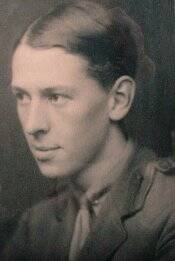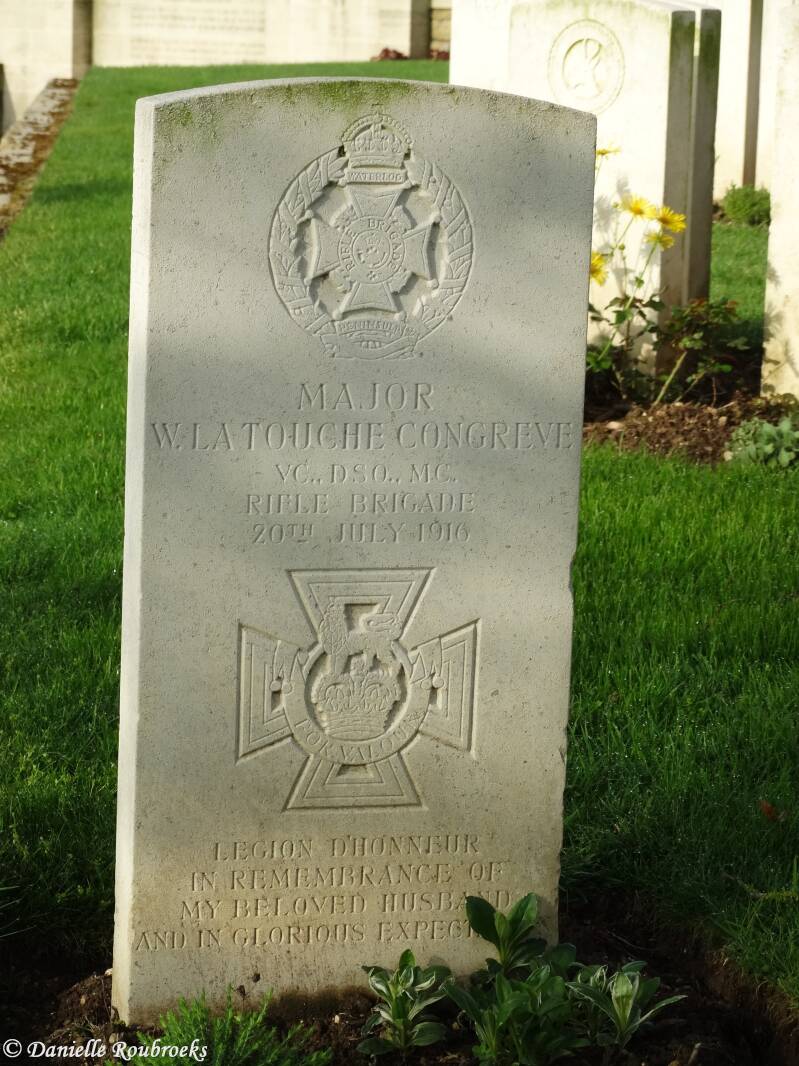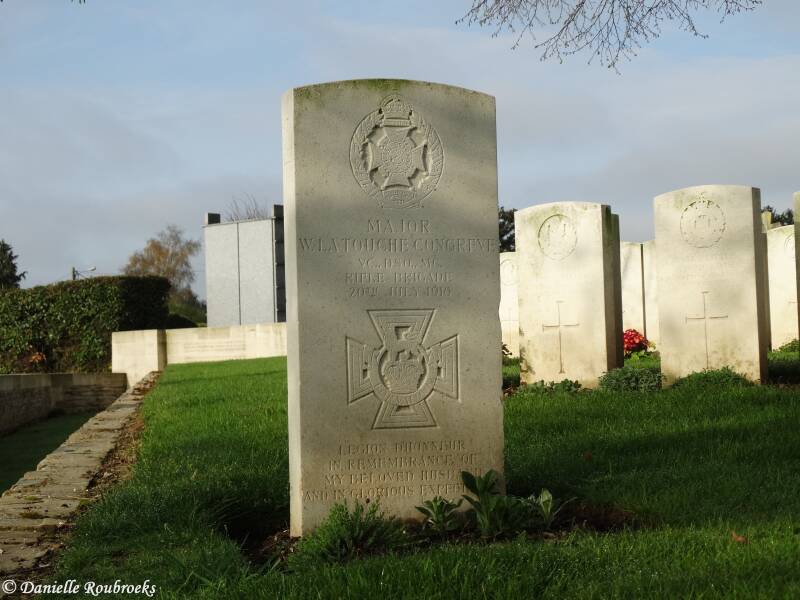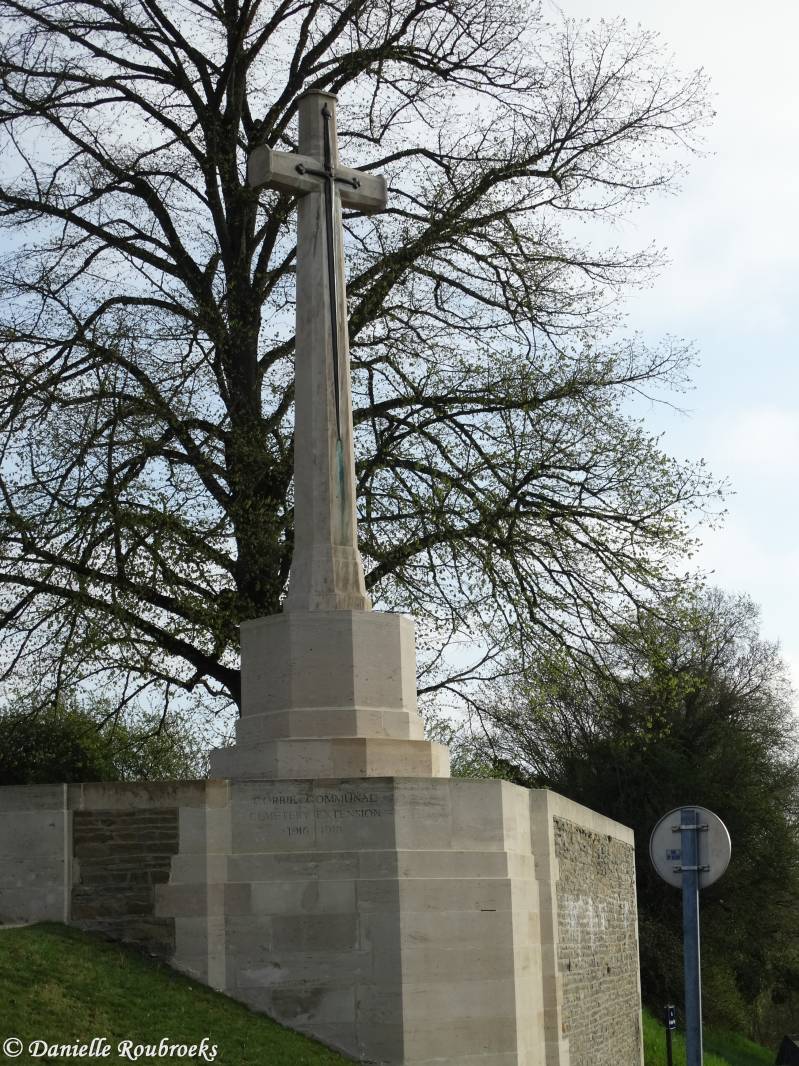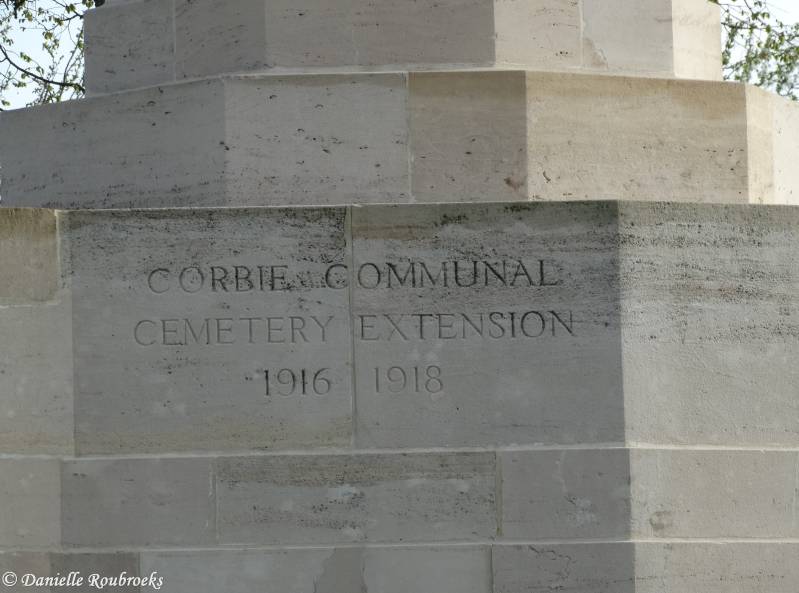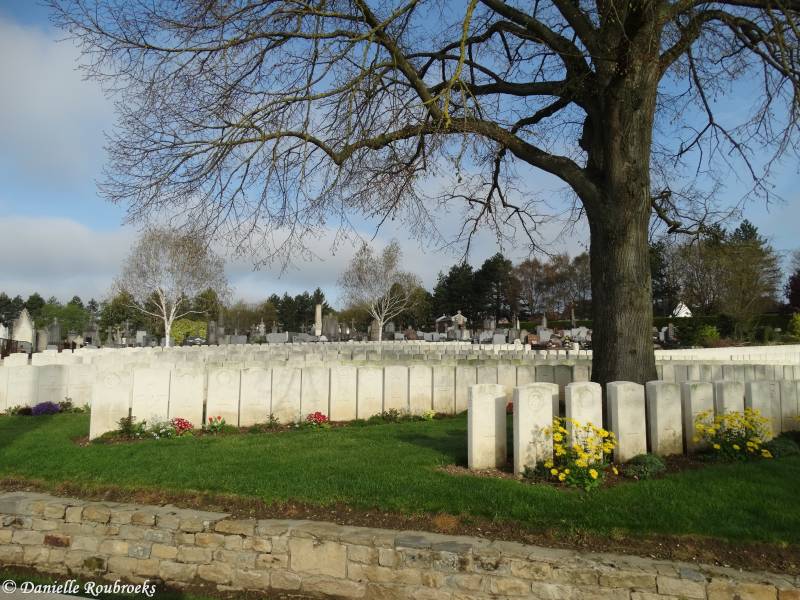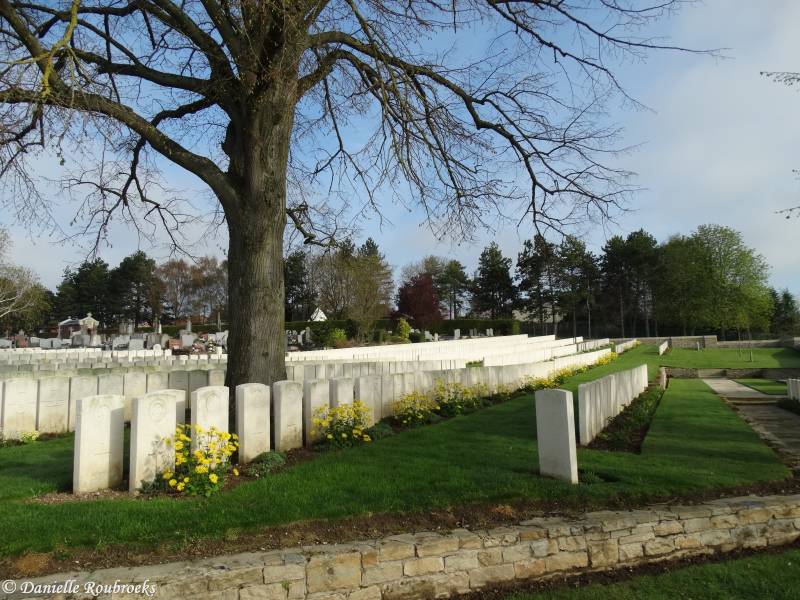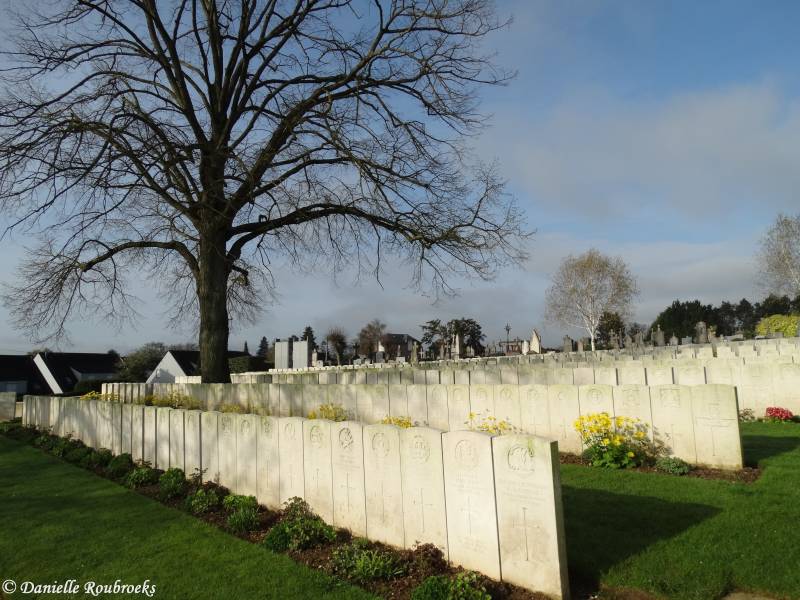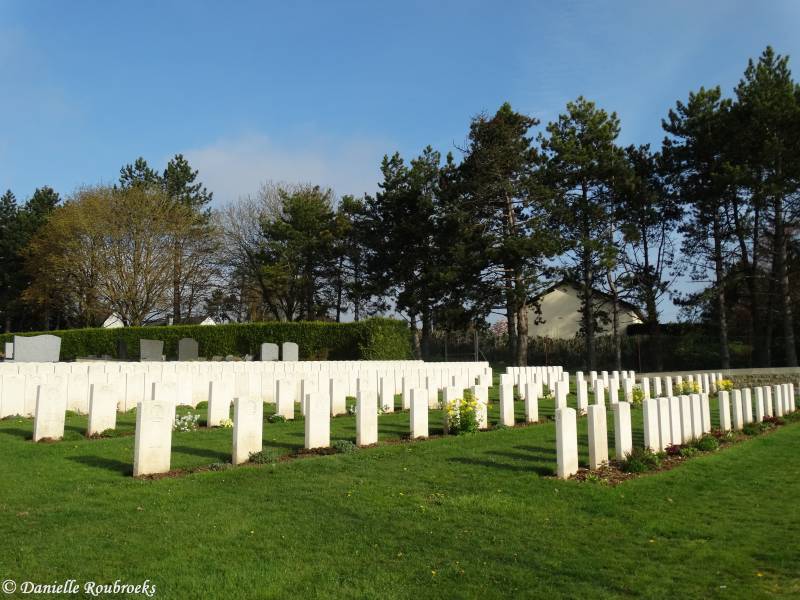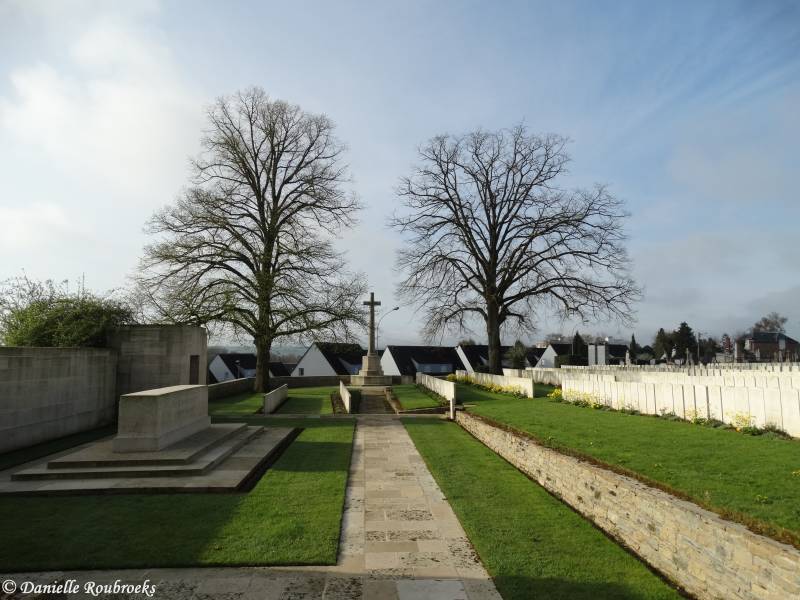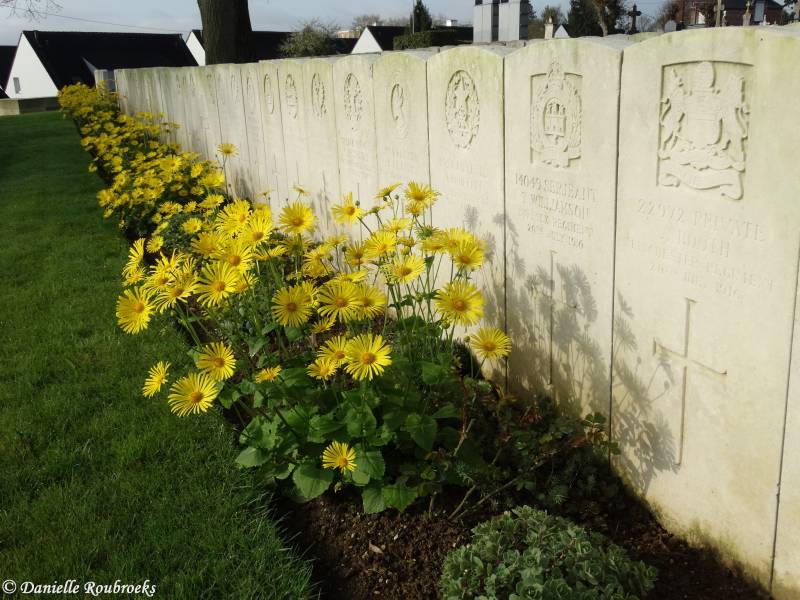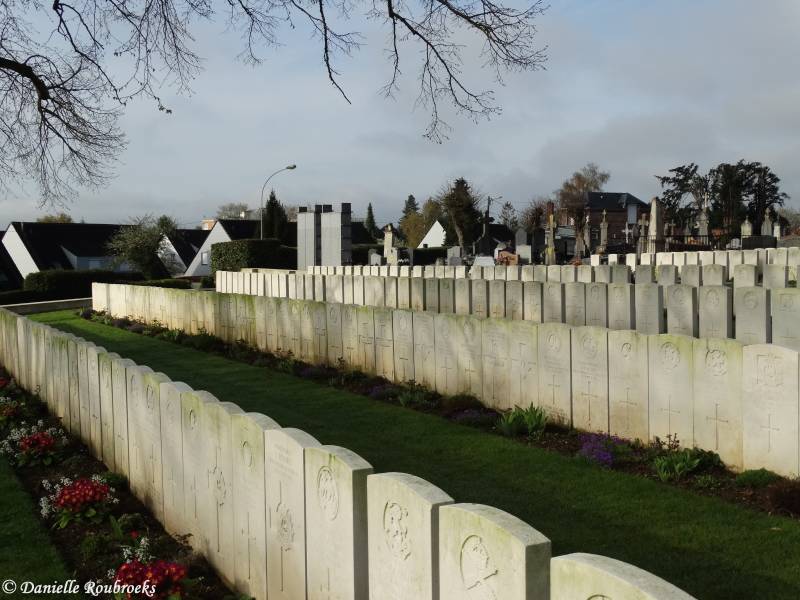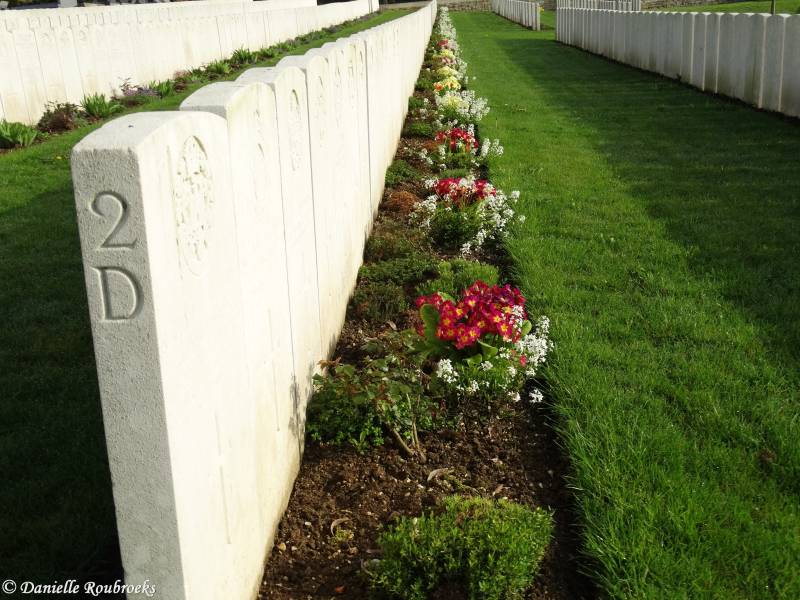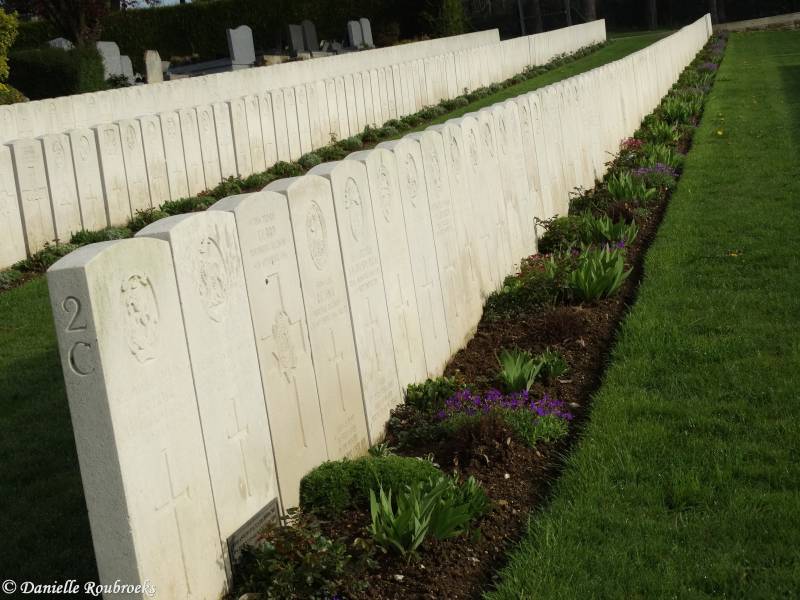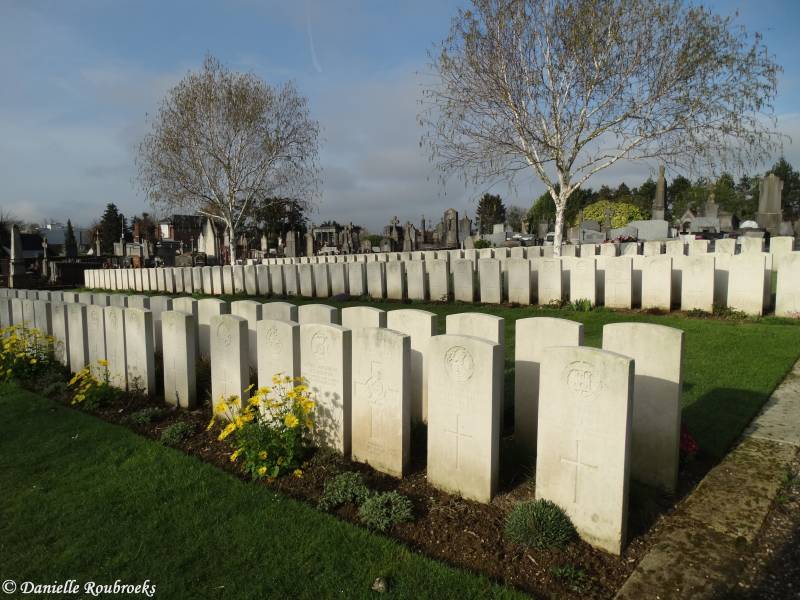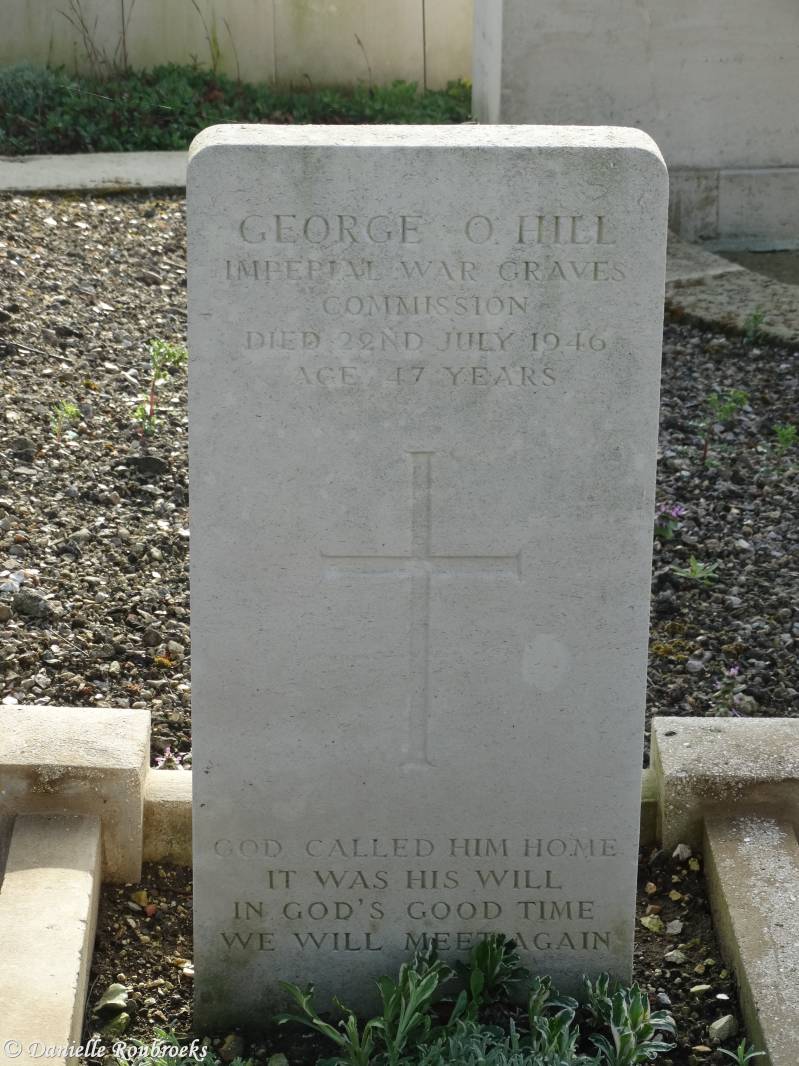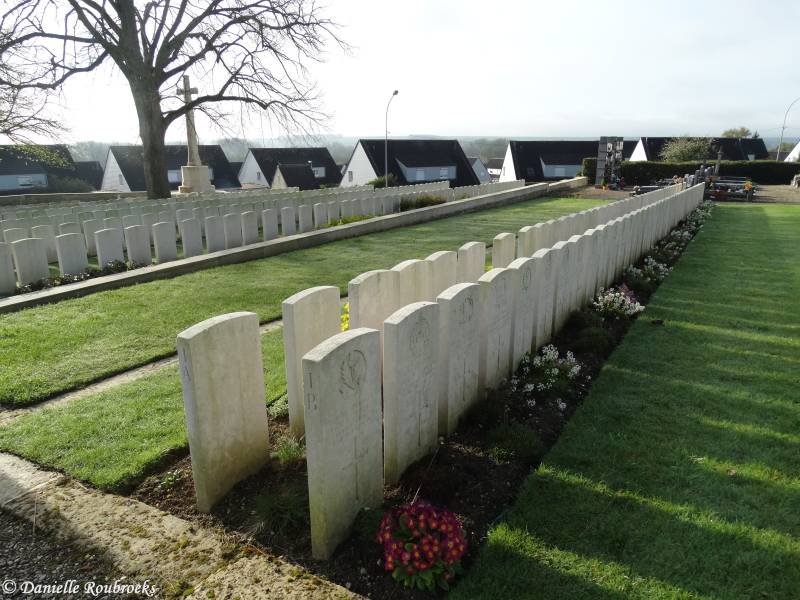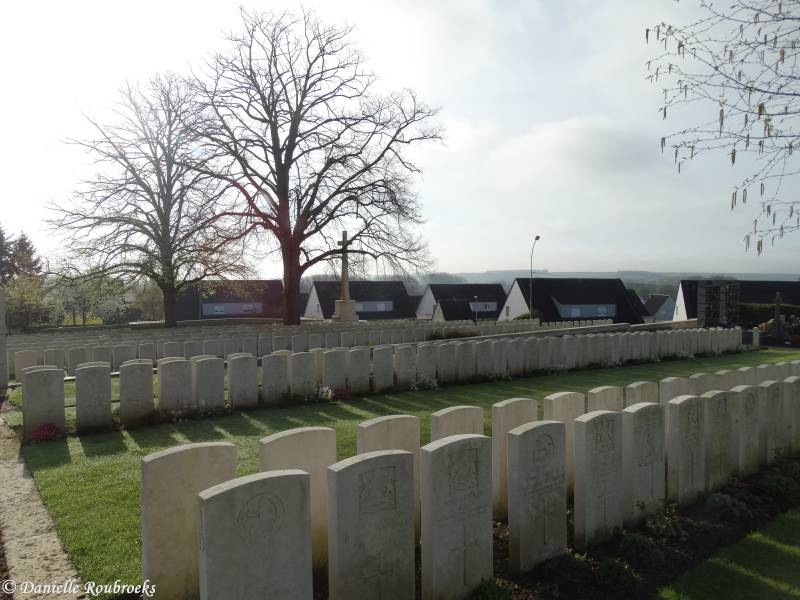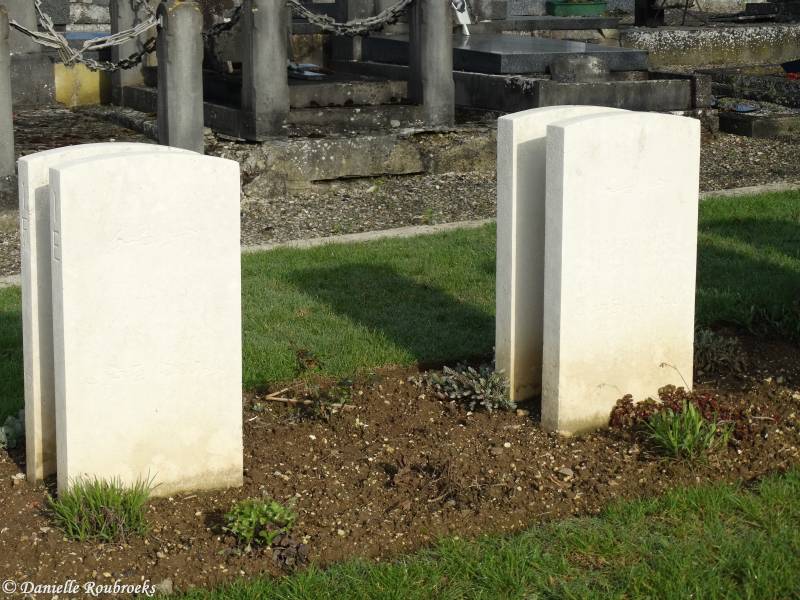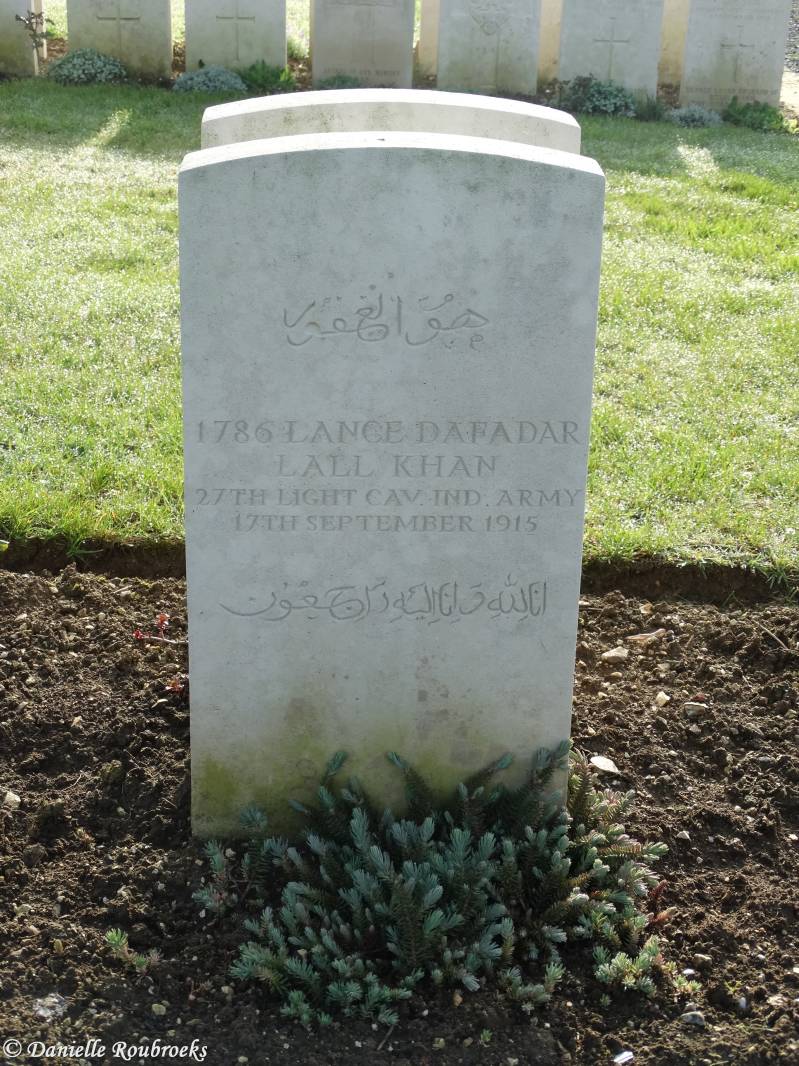Corbie Communal Cemetery Extension
Historical Information (Source: CWGC)
Corbie was about 20 kilometres behind the front when Commonwealth forces took over the line from Berles-au-Bois southward to the Somme in July 1915. The town immediately became a medical centre, with Nos 5 and 21 Casualty Clearing Stations based at La Neuville (the suburb across the Ancre) until October 1916 and April 1917 respectively. In November 1916 the front moved east, but the German advance in the Spring of 1918 came within 10 kilometres of the town and brought with it field ambulances of the 47th Division and the 12th Australian Field Ambulance. The communal cemetery was used for burials until May 1916, when the plot set aside was filled and the extension opened. The majority of the graves in the extension are of officers and men who died of wounds in the 1916 Battle of the Somme. The remainder relate to the fighting of 1918. The communal cemetery contains 249 First World War burials, the extension 918. The extension was designed by Charles Holden.
Cemetery
Served with
- United Kingdom (246)
- Indian (4)
Served in
- Army (250)
Extension
Served with
- United Kingdom (839)
- Australian (58)
- South African (27)
- German (1)
Served in
- Army (920)
- Air Force (5)
VICTORIA CROSS
Major William La Touche CONGREVE - Rifle Brigade
Died 20 July 1916
Country of Service: United Kingdom
Awards: Victoria Cross, Distinguished Service Order, Military Cross, Mentioned in Despatches, Legion of Honour
Citation
An extract from the London Gazatte, dated 24th October, 1916 records the following: "For most conspicuous bravery during a period of fourteen days preceding his death in action. This officer constantly performed acts of gallantry and showed the greatest devotion to duty, and by his personal example inspired all those around him with confidence at critical periods of the operations.
During preliminary preparations for the attack he carried out personal reconnaissances of the enemy lines, taking out parties of officers and non- commissioned officers for over 1,000 yards in front of our line, in order to acquaint them with the ground. All these preparations were made under fire. Later, by night, Major Congreve conducted a battalion to its position of employment, afterwards returning to it to ascertain the situation after assault. He established himself in an exposed forward postion from where he successfully observed the enemy, and gave orders necessary to drive them from their position. Two days later, when Brigade Headquarters was heavily shelled and many casualties resulted, he went out and assisted the medical officer to remove the wounded to places of safety, although he was himself suffering severely from gas and other shell effects. He again on a subsequent occasion showed supreme courage in tending wounded under heavy shell fire. He finally returned to the front line to ascertain the situation after an unsuccessful attack, and whilst in the act of writing his report, was shot and killed instantly."
Grave Reference: Plot 1. Row F. Grave 35.
(Source: Wikipedia)


